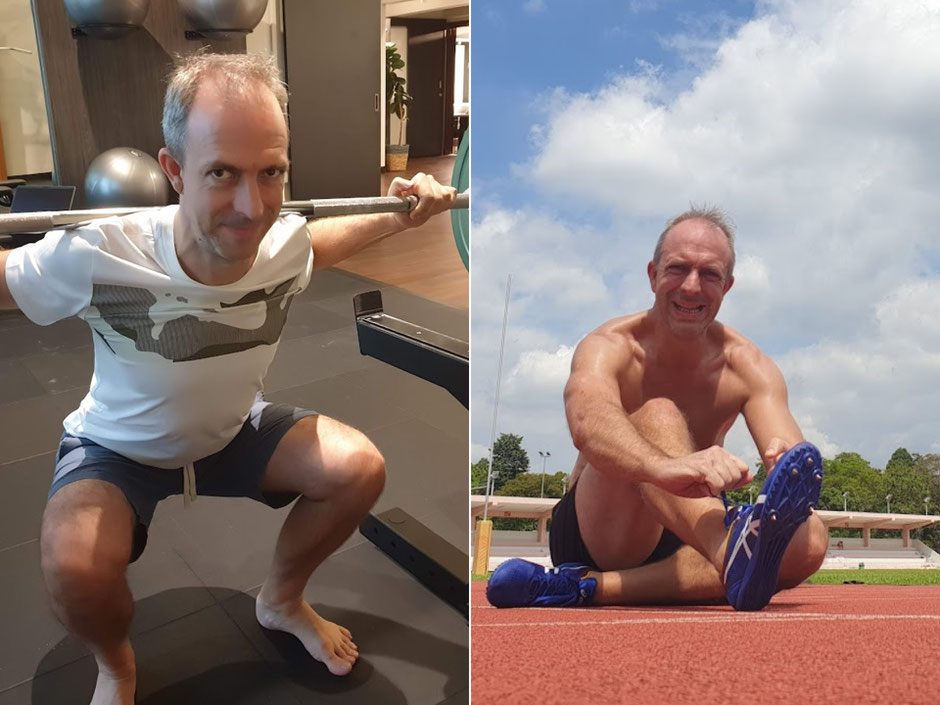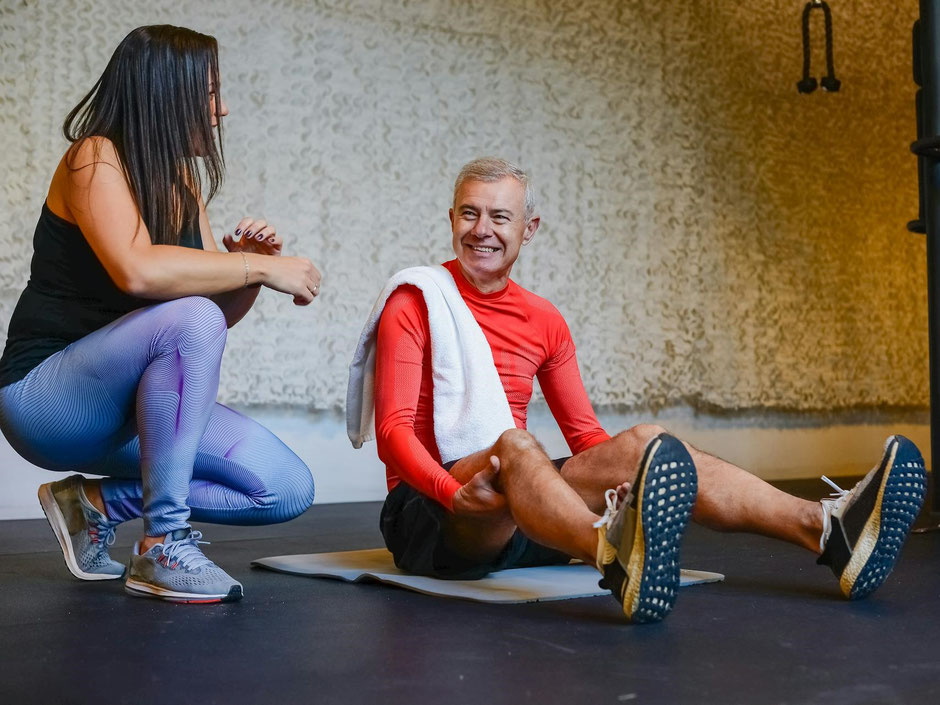Busy professionals have little spare time for exercise and cannot always exercise consistently due to work schedules, holidays, family commitments and business travel.
So if you have limited time to exercise, and expect to take frequent time off between your exercise sessions, then what should you focus on for general health, longevity and avoiding diseases such as cancer and heart disease? Cardiovascular fitness such as running, cycling, and swimming or strength and conditioning?

First, I would argue neither and do whatever you love, or whatever supports your ability to play a sport that you love. As doing what you love is most likely to encourage consistency. But if you're not playing a sport, and your main focus is health and longevity, then which is better for that? Strength or cardio? The obvious answer is both - if you have time!
But if not, which is better? I decided to tackle this topic from a very different angle than most of the blogs and research papers research it. Not by looking at how quickly you gain strength and cardio (or VO₂ max - the maximum oxygen consumption during intense exercise) but how quickly you lose it! So this is particularly beneficially to the busy working executive who often has limited time and takes time off regularly.
I recently tested this on myself by introducing a regular running session into my weekly regime.
I never run because I don't like it. I’m all fast-twitch, type IIb muscle fibers (the muscle fibers predominantly used for strength and power). Running is just not my thing. However, in the deep dark recesses of my soul, I felt that I should do some cardio activity at least once a week. I feel it’s holistic and I also hate it - and it’s good mental discipline to do things you hate!

So earlier this year I did a 2km run around the track and timed myself: 12m30s.
Then I did that once a week.
Six weeks later, my time was 9m33s.
A 24% improvement - quick gains!
Then I took two months off and my latest time was 11m30. A 20% regression. Presumably, after another month or so, I would be back to where I started. And the research seems to support this suggestion that VO₂ max reverts to baseline after 3 months of no exercise (see footnotes).

Now my deadlift training weight is 140kg (max in a competitive environment is 160kg) and I took a whole year off deadlifting. During my first session last week, I did 120kg without much effort in training so about 14% off my training weight. That’s still massively above where I started which was only 60kgs!
So I lost 20% of my cardio gains in 2 months but only 14% of my strength gains in 1 year.
It’s not a perfect N=1 experiment but it seems to reinforce the science which does show that you gain and lose cardiovascular fitness quicker than strength - particularly as you age.
I went through a bunch of studies (see footnotes) and came up with this table to help visualize the comparative losses from these studies.
| Weeks of Inactivity | Cardio Losses | Strength Losses |
| 1 to 2 | start of decline | none |
| 4 | significant loss | minimal |
| 6 to 8 | substantial loss | some |
| 13+ | reversion to baseline | significant |
This was a great study that looked at the difference between strength losses in young adults vs older adults:
| Gains and Losses | 20 to 30 year olds | 65 to 75 year olds |
| strength gains after 9 weeks of training | 34% | 28% |
| strength losses after 31 weeks of inactivity | 8% | 14% |
This was amazing to me for 2 reasons:
- 70-year-olds can gain 28% strength in 9 weeks compared to 20-year-olds. So it’s never too late to start!
- The 70-year-olds only lost 14% of their strength gains after doing nothing for 7 months!
That’s pretty impressive.
Interesting this seems to be similar to both men and women. Research by Lemmer et al. (2000) found that both older men and women experience similar relative gains and losses in strength, with women showing around a 14% loss after 7 months of inactivity, comparable to men. Likewise with VO₂ max.

There are other benefits of strength training vs cardio:
- If you do a lot of cardio, you need to consume more calories that you’re burning. When you go on holidays, those extra calories that you are habitually eating have nowhere to go apart from into fat. Strength training increases glycogen stores in muscles through several mechanisms, including muscle hypertrophy, increased glycogen synthase activity, improved insulin sensitivity, and the repeated depletion and replenishment cycle of glycogen stores.
- Cardiovascular training can lead to type IIb fibers converting to type IIa fibers. This adaptation enhances endurance capabilities but reduces the relative proportion of pure fast-twitch fibers for strength and power. Less muscle density can result in lower glycogen storage capacity.
- Strength improves muscle density, which improves connective tissue strength and bone density. 100% of your white blood cells are created in your bone marrow. Stronger bones, more bone marrow, more white blood cells, stronger immune system - fewer coughs, colds, COVID, flus, and of course, it’s the job of your immune system to keep cancer at bay and there is a strong correlation between strength and not getting cancer.
- Strength training also improves metabolic rate, reduces the risk of injury, enhances functional fitness for daily activities, helps in managing chronic conditions like diabetes and arthritis, enhances mental health by reducing stress and anxiety, boosts neuroprotective growth factors and new brain cell formation, significantly improves body image, self-perception, and a sense of accomplishment, promotes the release of growth hormone and testosterone, both of which are crucial for muscle growth and fat loss and balances other hormones like insulin and glucagon.

Wrapping Up
So what are the takeaways here? If you’re in your 40s and 50s and looking to start exercising for the first time, or in a while, then focusing on a strength training program initially probably makes sense (starting with a holistic movement assessment first of course). After all, if you’re untrained, you’re going to get out of breath and achieve cardiovascular benefits just from lifting weights. Two weekly sessions are a good starting point. That’s where many of our clients start. There are 168 hours in a week, so 2 hours is just over 1% of your time.
If you feel like you have a bit more time to spare, then add in a 30-minute cardio session weekly on your own: fast swimming, cycling, or running, for example. Something that keeps you out of breath for that 30-minute interval.
Finally, always look for an excuse to walk - rather than take the car or public transport, particularly at the weekend when you have more time.
Footnotes
- Detraining Effects Prevention: A New Rising Challenge for Athletes (Girardi et al. 2020), https://www.ncbi.nlm.nih.gov/pmc/articles/PMC7428722/
- Three Weeks of Detraining Does Not Decrease Muscle Thickness, Strength or Sport Performance in Adolescent Athletes (Gavanda et al. 2020), https://journals.plos.org/plosone/article?id=10.1371/journal.pone.0228580
- Age and gender responses to strength training and detraining (Lemmer et al. 2000), https://pubmed.ncbi.nlm.nih.gov/10731011/
- Effects of Physical Activity and Inactivity on Muscle Fatigue (Bogdanis, 2012), https://www.frontiersin.org/articles/10.3389/fphys.2012.00142/full
- The epidemiology of aerobic physical activity and muscle-strengthening activity guideline adherence among U.S. adults (Whitfield et al., 2013), https://ijbnpa.biomedcentral.com/articles/10.1186/s12966-019-0797-2
- Recommended physical activity and all-cause and cause-specific mortality in US adults (Saint-Maurice et al., 2020), https://www.bmj.com/content/370/bmj.m2031

Write a comment